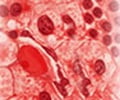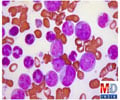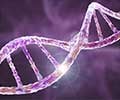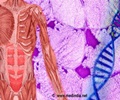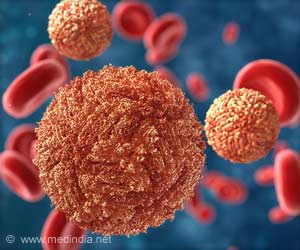For the first time, researchers have linked reemergence of the most common type of childhood cancer to specific gene mutations.
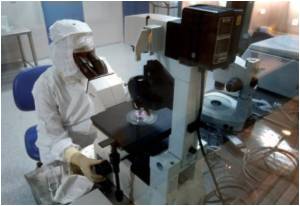
"There has been no progress in curing children who relapse, in spite of giving them very high doses of chemotherapy and bone marrow transplants," said Dr. Carroll.
The discovery suggests how scientists may be able to thwart a dangerous form of acute lymphoblastic leukemia, a rapidly progressing blood-borne cancer that strikes about 6,000 people in the United States every year and accounts for more than one in four pediatric cancers. Eventually, such information could help doctors detect the early emergence of chemotherapy-resistant leukemia cells in patients and switch to a different treatment strategy before the disease can fully reassert itself.
In acute lymphoblastic leukemia, abbreviated ALL, the body's bone marrow produces an abnormally large number of lymphocytes, or white blood cells. Improved treatments have increased the overall cure rate to roughly 80 percent. But Dr. Carroll says the prognosis is especially dire for some 20 percent of patients who relapse.
Medical researchers have suspected that the reemergence of disease could be due to drug resistance, but previous efforts had not uncovered any definitive pathway. For the new study, led by Dr. Carroll and graduate student Julia Meyer, researchers at five U.S. institutions spent three years analyzing multiple bone marrow samples from pediatric ALL patients for more clues to the disease's progression.
With the help of the Children's Oncology Group, a multi-institutional clinical trials consortium supported by the National Cancer Institute, the researchers analyzed the entire transcriptome—or the full sequence of RNA —from 10 children with pediatric B lymphoblastic leukemia, the most common subtype of ALL. RNA is an essential intermediary in the cellular process that uses DNA blueprints to assemble specific proteins, thus a leukemia transcriptome gives researchers a view of all active genes within the cancerous cells.
Advertisement
In all, the team documented 20 relapse-specific mutations—none of which had previously been implicated in ALL recurrences. Intriguingly, two patients harbored a mutation in the same gene, NT5C2, which encodes a protein that normally regulates some building blocks used to construct DNA but also can degrade an important class of drugs called purine analogues used in ALL therapy.
Advertisement
Armed with the new knowledge, Dr. Carroll says doctors may be better equipped to identify patients likely to relapse. "We plan to test the feasibility of screening patients during therapy using sophisticated sequencing technology to pick up low-level mutations in NT5C2 and other genes indicating that a mutant clone is growing," he says. His team is researching whether that advance warning could allow doctors to administer separate drugs to beat back the cancer cells, and is also working on a strategy to directly inhibit the mutant enzyme.
Source-Eurekalert

